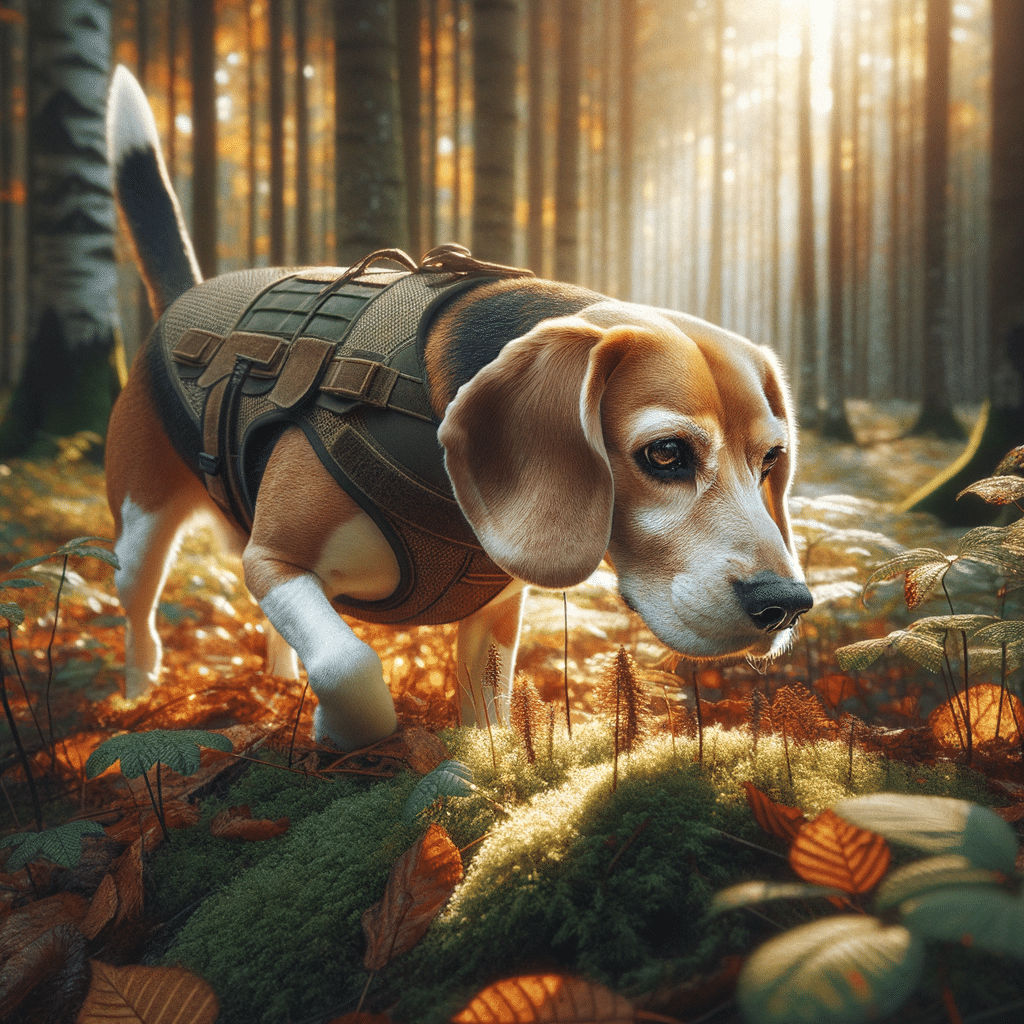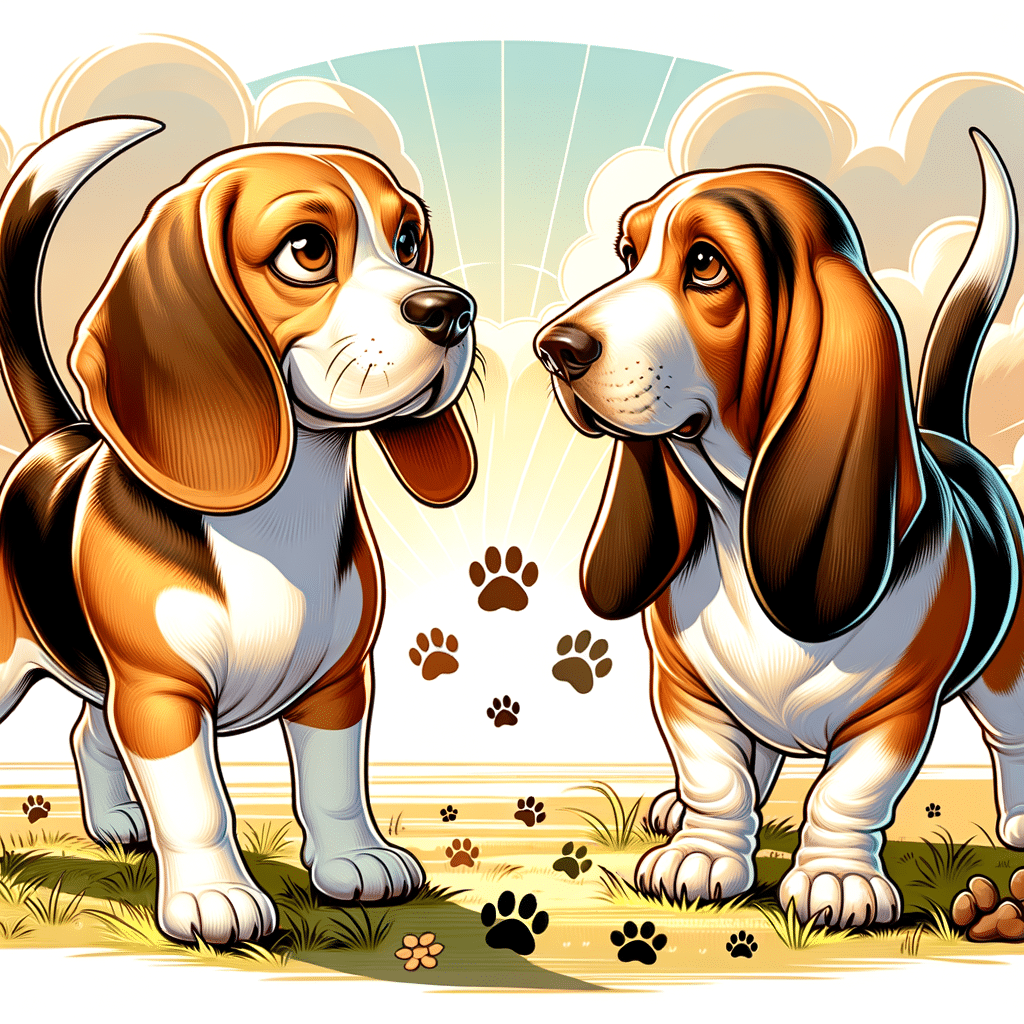When you’re ready to add a dog to your home, you may compare a beagle to a corgi. Potential dog owners are often drawn to each breed’s distinct qualities when deciding between them.
In This Article
Beagles are known for their keen sense of smell and tracking abilities, often making them the breed of choice for hunting and detection tasks. These medium-sized hounds are friendly and curious, thriving in active households.
Corgis, notably the Pembroke Welsh corgi, are small to medium and display a strong stature due to their history as herding dogs. Both breeds are affable and suited to family life, yet they present different care and lifestyle adjustment requirements for you.
Understanding the differences and similarities between beagles and corgis is crucial for deciding which breed best suits your lifestyle. These popular dog breeds have significant differences. While both breeds are compatible with first-time dog owners, their energy levels, training needs, and health considerations vary significantly.
A beagle dog’s robust energy and instinct to follow scents require diligent exercise and mental stimulation. Conversely, according to the American Kennel Club, most corgis, including the Pembroke corgi, demand less exercise but often require more assertive training because of their strong-willed nature.
Highlights
- Both beagles and corgis are suitable for families but have distinct behavioral traits and exercise needs.
- Beagles have a strong sense of smell and require substantial exercise; corgis are intelligent and have a herding background.
- Each breed presents unique care requirements and health considerations that should be well-understood before making a choice.
Breed Origins and History
The beagle and the corgi represent breeds with distinctive roles throughout history, with the beagle emerging as a hunting companion and the corgi excelling in herding duties.
Origins of the Beagle
The beagle’s history can be traced back to ancient times, beginning in ancient Greece. They evolved from dogs that fulfilled hunting tasks because of their keen sense of smell and tracking abilities.
The beagle we know today has its more direct roots in England before the Roman times and was further developed for hunting small game, such as rabbits and hares. The modern beagle’s ancestors include the Talbot hound, present in the 8th century, and later the Southern hound in the 18th century before the breed was refined to the familiar beagle of modern times.
History of the Corgi
The corgi is divided into two distinct breeds: the Pembroke Welsh corgi and the Cardigan Welsh corgi. The breed’s lineage may date back to when Vikings brought Swedish vallhunds to Wales. An alternate theory is tied to the 12th century and the arrival of Flemish weavers.
The Pembroke Welsh corgi was recognized by The Kennel Club in the United Kingdom in 1934. It is an indigenous herding dog of Wales, respected for its prowess in driving and guarding cattle and its intelligence and agility. A Welsh cattle dog is even mentioned in the 11th-century Doomsday Book, cementing its long-standing connection to Wales and its history.
Physical Characteristics
When comparing beagle and corgi breeds, one can notice distinct differences in their physical makeup. These differences are evident in their size and weight, the coloration and type of coats, and unique physical features.
Size and Weight
Beagle
- Height: 13-15 inches at the shoulder
- Weight: 20-30 pounds
Corgi
- Height: 10-12 inches at the shoulder (for Pembroke and Cardigan)
- Weight: 25-38 pounds for Pembroke and up to 38 pounds for Cardigan
Coat and Colors
Beagle
- Coat: Short, dense double coat that is weather-resistant
- Colors: Commonly tricolor (black, white, and brown), red and white, and lemon
Corgi
- Coat: Thick double coat consisting of a soft undercoat and a longer topcoat
- Colors: Variety including fawn, sable, red, black, and tan, often with white markings
Distinguishing Features
Beagle
- Ears: Long and droopy
- Appearance: Broad head, square-cut muzzle, and expressive eyes; tail typically carried high
Corgi
- Ears: Upright and pointed, resembling that of a fox
- Appearance: Notable for its short legs relative to a long body, the Pembroke variety sometimes has a docked tail, while the Cardigan has a longer, fox-like tail
Temperament and Behavior
The temperaments of beagles and corgis diverge greatly due to their hereditary roles and personalities, yet both breeds show high levels of intelligence and affection.
Behavioral Traits
Beagles are known for their friendly and curious nature. They often show a keen sense of smell and a strong instinct for tracking. With medium to high energy levels, they require ample exercise to satisfy their urge to sniff and explore. As former hunting dogs, beagles may show independent behavior but remain loyal to their families.
Corgis, particularly the Pembroke Welsh corgi, were originally bred as herding dogs, which is evident in their behavior. They tend to be intelligent, attentive, and occasionally stubborn. This high-energy breed requires regular exercise to channel its herding tendencies. Corgis are also recognized as affectionate and loyal family pets.
Suitability with Children and Other Pets
Beagles are typically very social and get along well with children, making them ideal for families. Their easy-going personality can also extend to interactions with other dogs and even cats, although their chasing instinct might require supervision.
Corgis are similarly affectionate with children, displaying both protectiveness and friendliness. This breed’s herding instinct can sometimes lead to nipping at children’s heels but can be managed with proper training. In multi-pet households, corgis can coexist well with other animals when socialized properly, though they may try to “herd” them due to their instincts.
Care and Health Considerations
Beagles and corgis each have specific exercise, training, and grooming needs and particular health issues to consider. Ensuring these needs are met is critical for their overall well-being.
Exercise and Training
Beagles
- Exercise needs: Moderate to high; they require regular physical exercise to maintain their stamina and prevent obesity due to their love for eating.
- Training: Respond well to obedience training; commands should be taught early to channel their energetic and sometimes stubborn nature.
Corgis
- Exercise needs: Moderate; despite their short stature, they have high energy levels and enjoy mental stimulation through interactive activities.
- Training: Intelligent and can learn commands quickly, but may have chasing behaviors due to their herding instincts.
Proper training and consistent exercise can help mitigate separation anxiety and loneliness in both breeds.
Grooming and Health Issues
Beagles
- Grooming: Requires regular brushing to manage shedding but not high maintenance.
- Health issues: Can develop allergies, hip dysplasia, and ear infections; regular check-ups can detect issues early.
Corgis
- Grooming: Heavy shedding; more frequent brushing needed to manage their coat.
- Health issues: Prone to obesity, hip dysplasia, degenerative myelopathy; require screenings to monitor for hereditary conditions such as progressive retinal atrophy and cataracts.
Both breeds are considered good companions that can live a fulfilling life with proper care. The average lifespan for beagles is about 10-15 years, while corgis typically live between 12-15 years, with attentive care contributing to their quality of life.
Frequently Asked Questions
When considering a beagle or a corgi, prospective pet owners often have questions about the breeds’ temperaments, training, size, and suitability as house pets. The following FAQs address common inquiries to help clarify the distinctions between these popular breeds.
What are the temperament differences between beagle and corgi breeds?
Beagles are known for their friendly and curious nature, making them great family companions. They are also independent, which can sometimes translate to stubbornness. Conversely, corgis are intelligent and alert dogs with a strong sense of duty, often leading them to be more vocal and protective.
Which is larger, a beagle or a corgi?
Beagles are generally larger than corgis when comparing height at the withers. Beagles typically come in two sizes, with the larger variant standing about 15 inches tall, while corgis usually range from 10 to 12 inches.
What are the training challenges associated with beagles compared to corgis?
Beagles may present training challenges due to their strong sense of smell and distractibility. They require patient and consistent training methods. Corgis are intelligent but may show a stubborn streak, which requires a firm and consistent hand during training.
What should be expected in terms of temperament for a beagle-corgi mix?
A beagle-corgi mix is likely to have a combination of the parents’ temperaments, potentially yielding a friendly, curious, and intelligent dog with a propensity for independence and protectiveness.
How do beagles and corgis compare regarding their suitability as house dogs?
Both beagles and corgis can adapt well to living in a house, provided they exercise enough to meet their energy levels. However, potential owners should consider that beagles may vocalize frequently, and corgis tend to shed more heavily.
Are beagles considered to be affectionate and cuddly pets?
Beagles are affectionate pets who enjoy cuddling and being close to their families. Their sociable demeanor makes them seek warmth and interaction with their families.






